The Italian nonnas, the grannies, still know how to make the best pasta themselves, like our Nonna Franca, who shared her passatelli recipe with us for the blog. I was lucky enough to have my own Nonna Italia to show me how to prepare the perfect pasta and, although I haven’t learned from her, I have very vivid images of her working and rolling and cutting and cooking. But how can someone that don’t have an Italian granny learn to make pasta? Elke shared with us her experience wiht a pasta class, and a professional one at that!
My Italian course friend Nicole and I attended the pasta course “Pasta without eggs made from durum wheat semolina” with Sfoglina Simonetta last weekend and had a lot of fun and entertainment during the 3-hour seminar.
Sfoglina (in English about “dough maker” and not to be confused with pasticciera, the confectioner) is one of the oldest authentic professions of the Italian kitchen tradition. Simonetta learned this at restaurant schools, located even in THE pasta region of Emilia Romagna, and has already won prizes. She gives courses for amateurs like me, but she also trains professional customers or appears at trade fairs.
The course takes place in Troviggiano, a small hamlet of Cingoli, in the local Pro Loco, a local event space. There are six of us and we are wondering why our fellow Italian participants want to learn how to make pasta. “I’m sure you all can do that from an early age” – we ask in amazement. “No” they say, and they mean it! In the past, families used to make fresh pasta every Sunday and everyone met to eat, mostly at Nonna’s. “Nowadays,” they say, “we still have fresh pasta for Sunday, but we usually buy it at the pasta shop or the supermarket.” But they want to learn, and that’s why they’re here.
Simonetta hands out large work boards and a few kitchen utensils: a small bowl, a fork, a wooden skewer, a spatula, a knife, a spray bottle of water, and a small ribbed board. And then it starts:
First a little product information, which is quite clear with only 3 ingredients – durum wheat flour (semola di grano duro rimacinata), water, salt – and then it starts: Simonetta weighs everything for us and distributes it to us in small bowls.
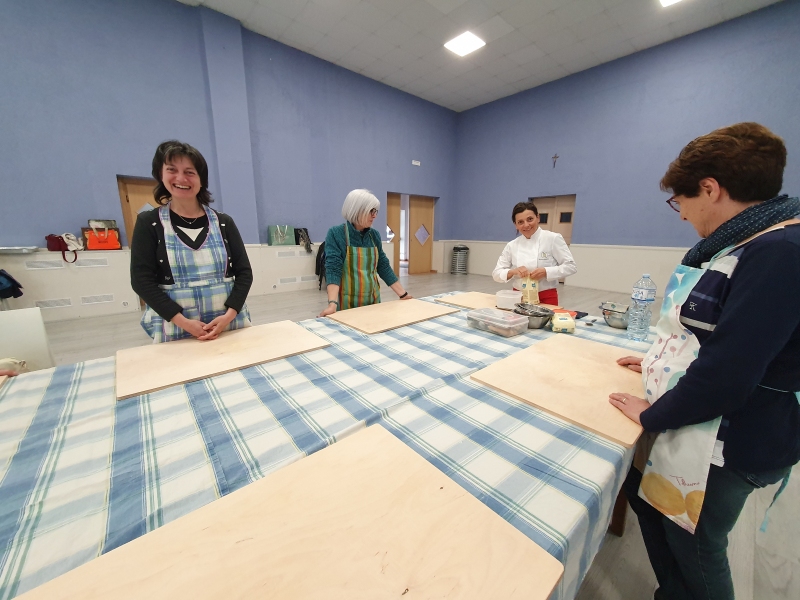
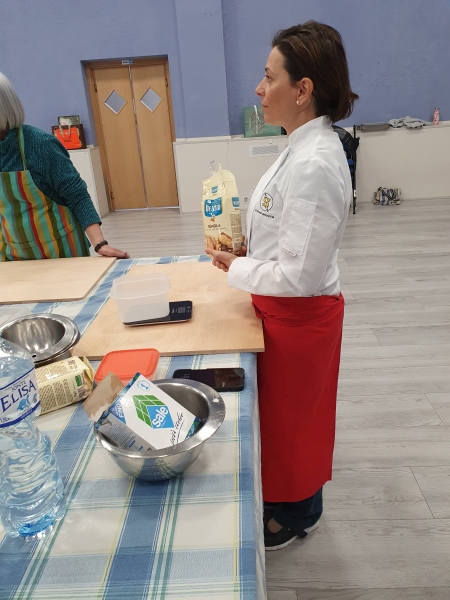
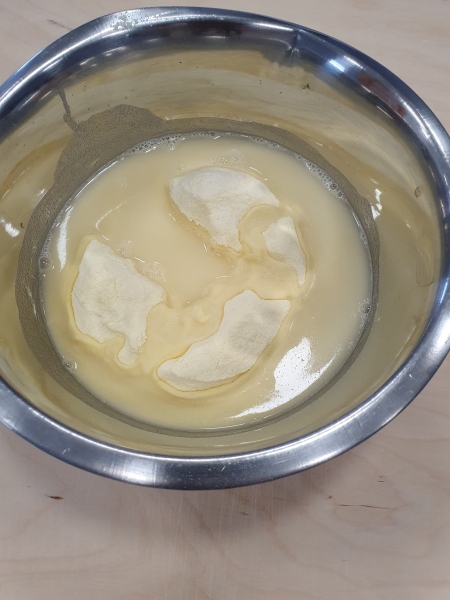
Basically, she says, there is pasta dough made with type 00 wheat flour and egg, and durum wheat flour with water and no egg. The former results in noodles that are softer, such as stuffed noodles, tagliatelle, or lasagna. The latter is used for a huge number of noodles, which should be as al dente as possible and keep a certain shape. But, says Simonetta, you can also mix, so use about half wheat flour 00 and half durum wheat flour. The more normal wheat flour, the softer the pasta will be afterwards.
Now we have to go. First mix it in the bowl with a fork, then continue with your hands on the baking board: we should knead and stretch the dough properly until it becomes supple. Simonetta walks around and checks if the dough is good. Form into a ball at the end and leave to rest under the inverted bowl.

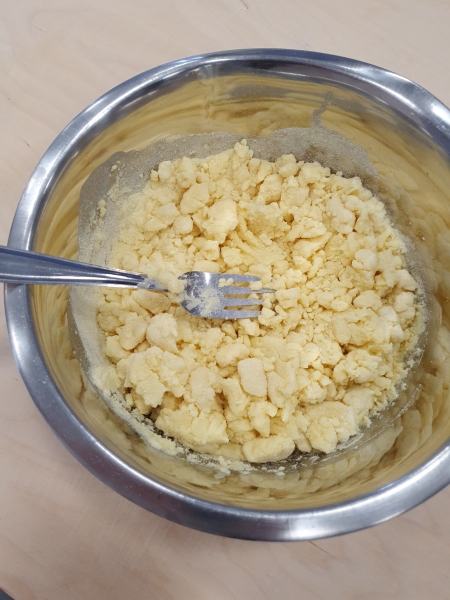
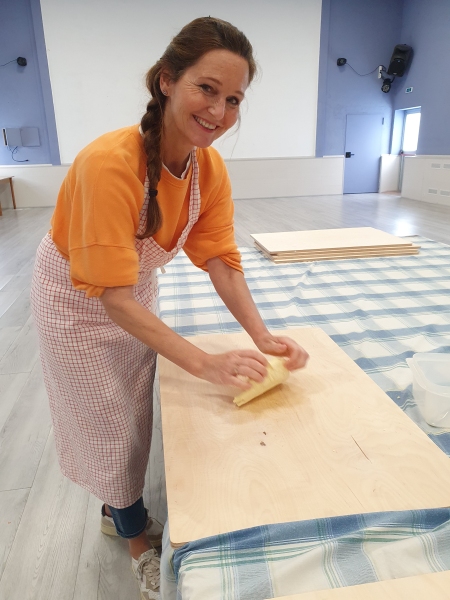
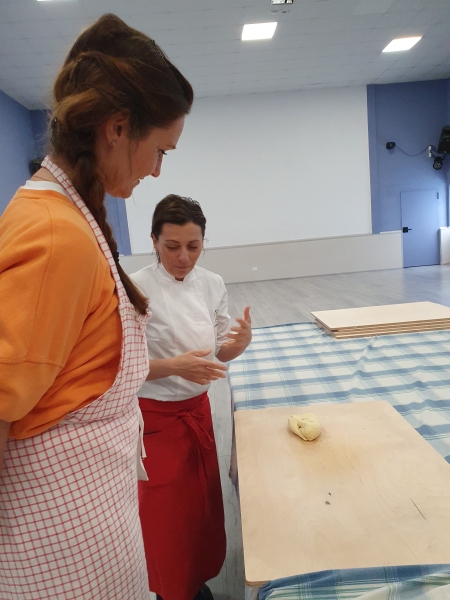

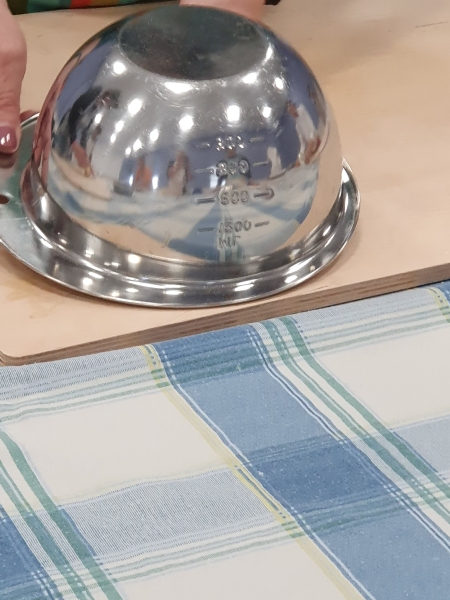
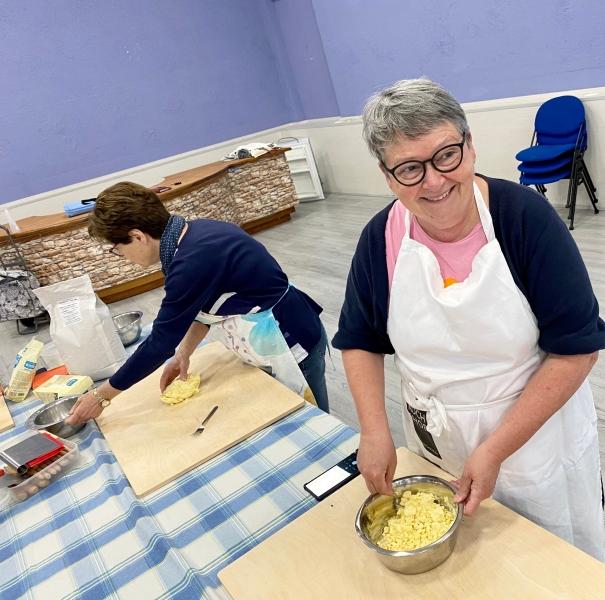
While our dough is resting, she shows us the pasta shapes we’re going to learn today:
Orecchiette (from Apulia and Basilicata), 2 types of Cavatelli (Apulia), Malloreddus (Sardinia), Trofie (Liguria), Lorighiddas (Sardinia), Busiate (Sicily), Maccheroni with spoke technique (Apulia, Calabria, Sardinia).
Nothing from our region included, I think. But our course instructor is a real Marchigian and that should suffice for today.
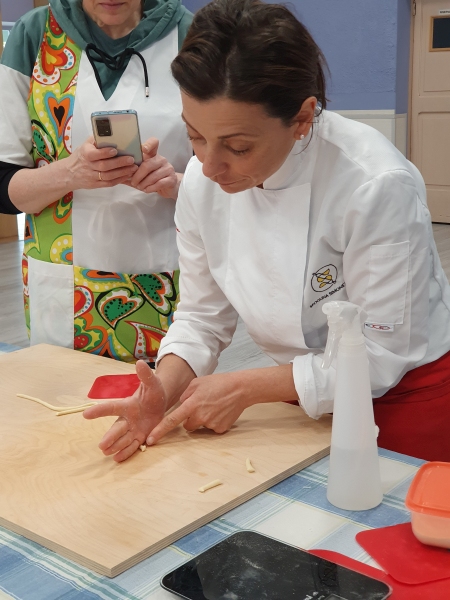
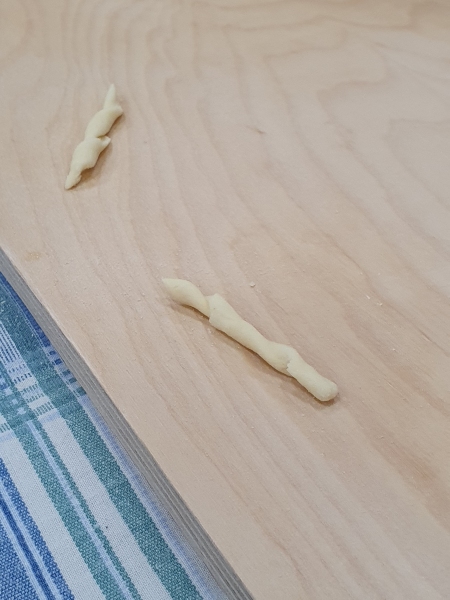
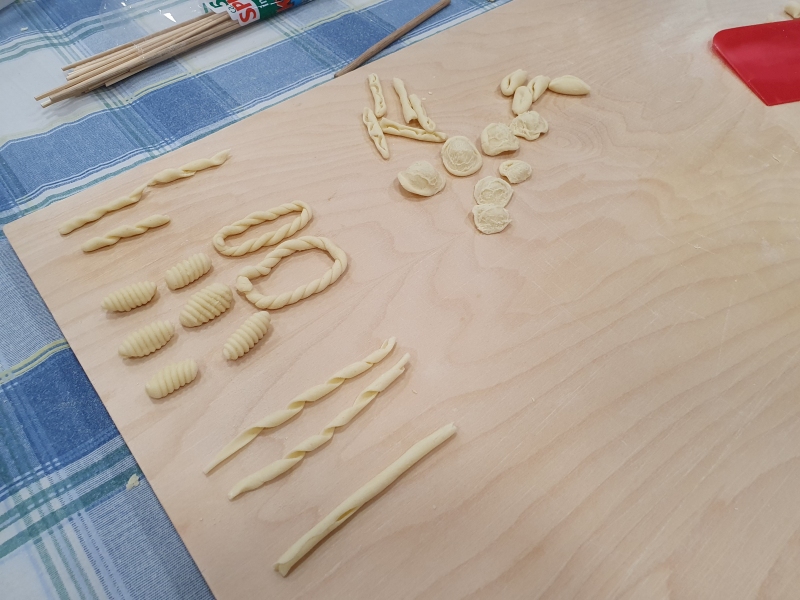
Now it’s our turn: it all starts with forming thicker or thinner rolls, depending on the type of pasta. And then there are special handles for each type of pasta, partly supported by one of the utensils. We are fully concentrated because the movements have to be precise and the baking board must not dry out. Amazingly, the dough doesn’t stick at all!


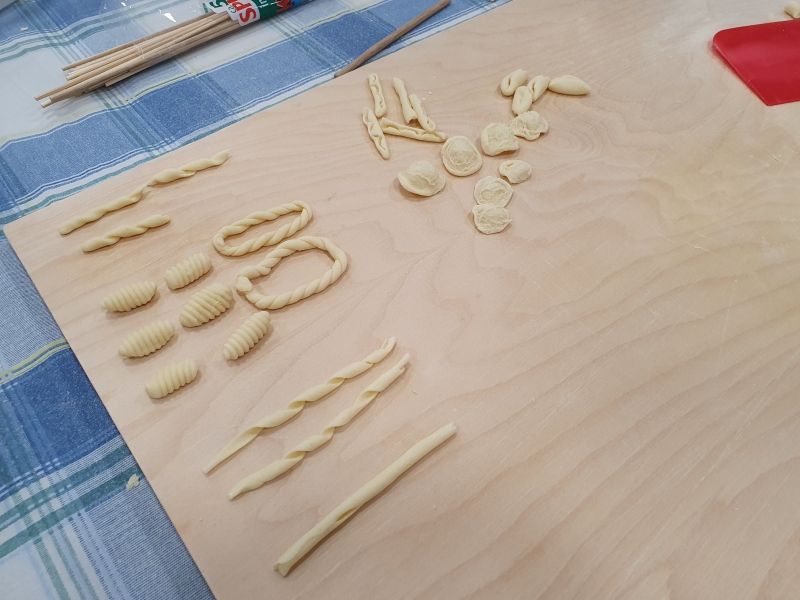
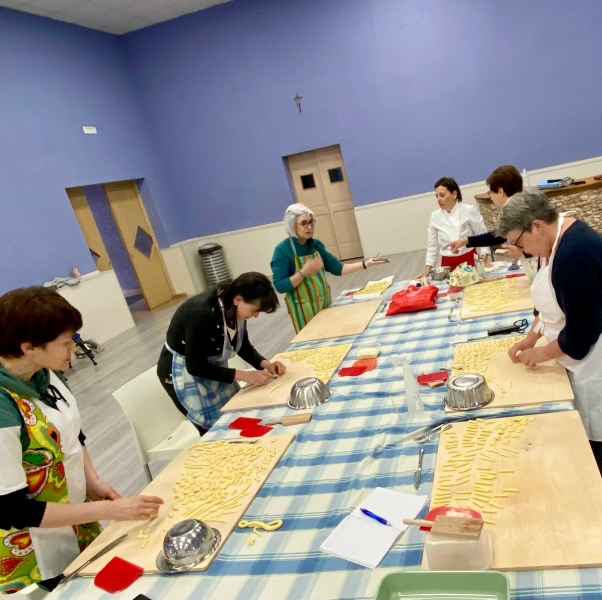
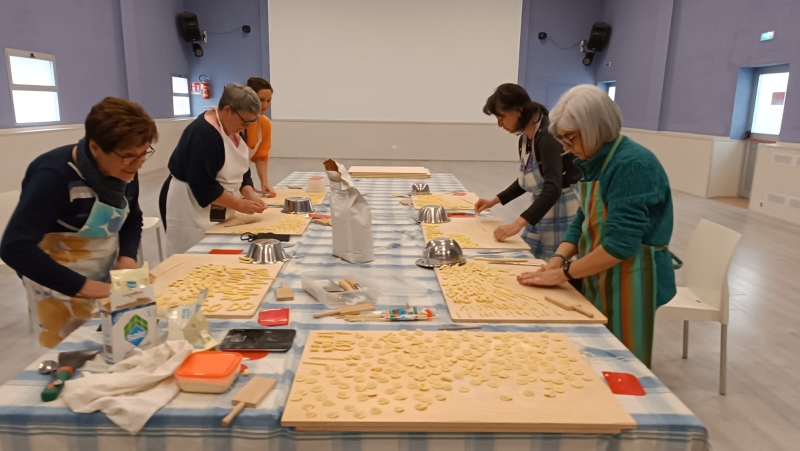
Time flies! I managed the trofie relatively quickly and Malloreddus, Lorighiddas and Busiate are also doing quite well. I gave up on the maccheroni for that. Now for the orecchiette! And they just don’t want me to succeed:


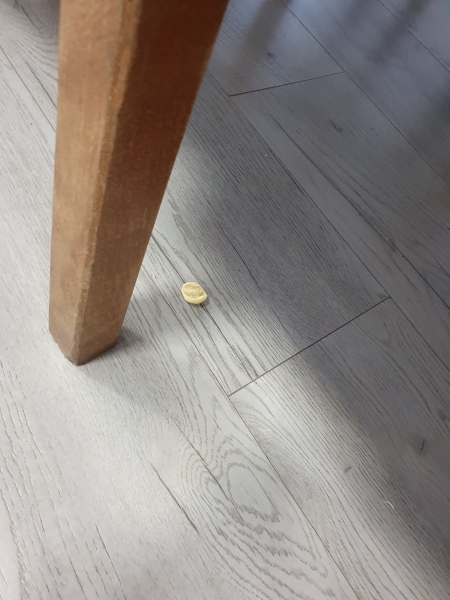
But Simonetta rushes to help and explains again step by step what is important and – lo and behold – suddenly it works for me too!
As a reward, Simonetta goes around and lets us try some of her semi-candied lemons – delicious.
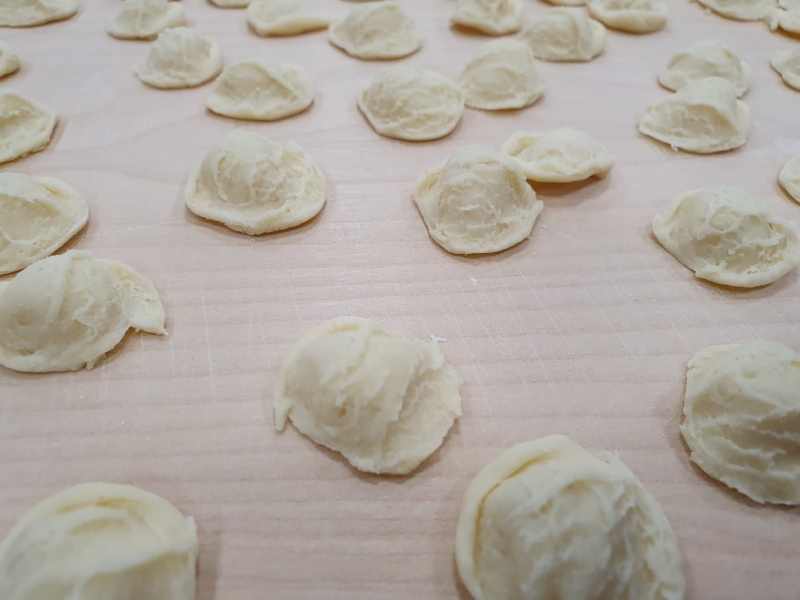
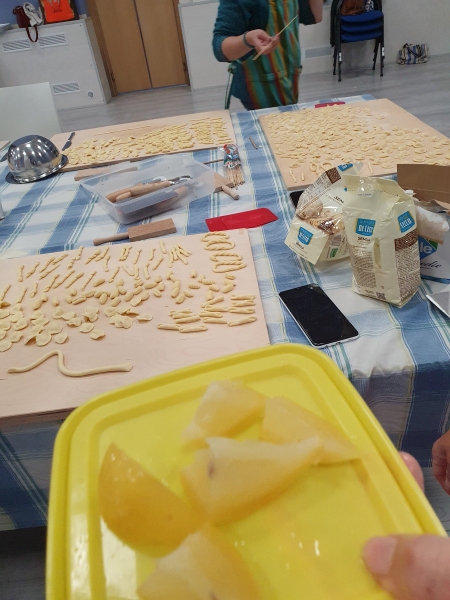
We laughed and dawdled too much – the 3 hours are almost over and there is still a lot of dough under my potty that needs to be processed. Why are the others almost done? But no problem, Simonetta helps out here too and makes a bunch of perfect orecchiette from my leftover dough.
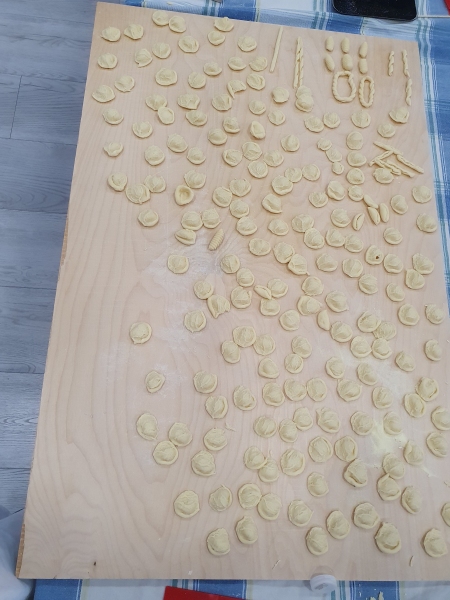

We are allowed to pack our pasta and take it with us while Simonetta prepares us a sample of her demonstration pasta – lovely with the candied lemons and bottarga (tuna caviar)!

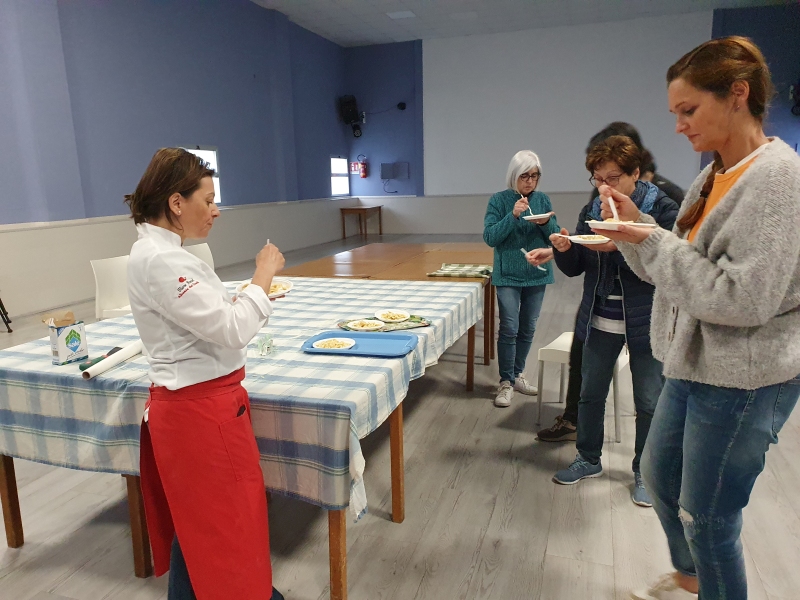
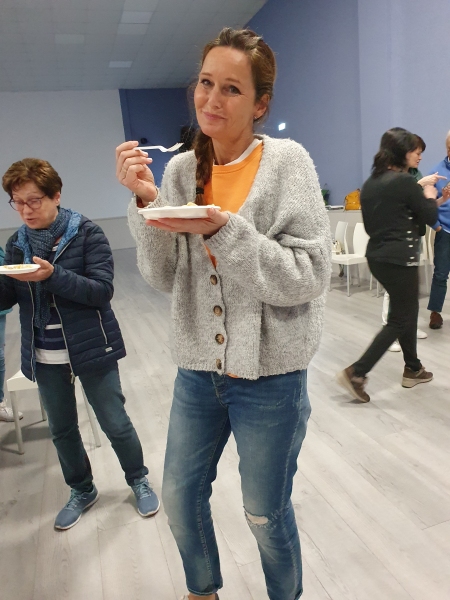
When I got home, I demonstrate my pasta, this time with a homemade artichoke sauce that I still had in the freezer – delicious too! We’re having visitors this week so I really need to put my new skills to good use and serve homemade pasta – I’ve already bought all the ingredients.
Anyone who goes to Simonetta’s website can subscribe to her newsletter, in which she announces the current dates. Or you can contact her by email or telephone to inquire about the next dates.
On request, she can also give the course in English and she also gives private courses for at least 5 people, she says, so you can make an appointment with her. She has given courses in the open air, courses for bachelorette parties or courses on specific topics.
And maybe I’ll sign up for one of their next classes, like something locally Marchigian…

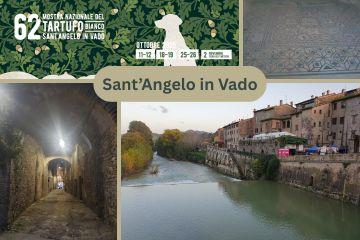
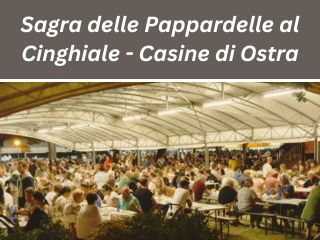
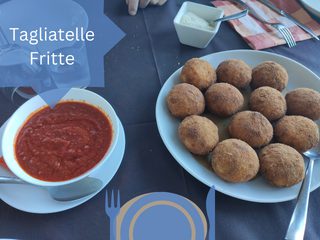
1 Comment
Roberta · 12 May 2023 at 15:44
We had a great evening! And a lot of fun!